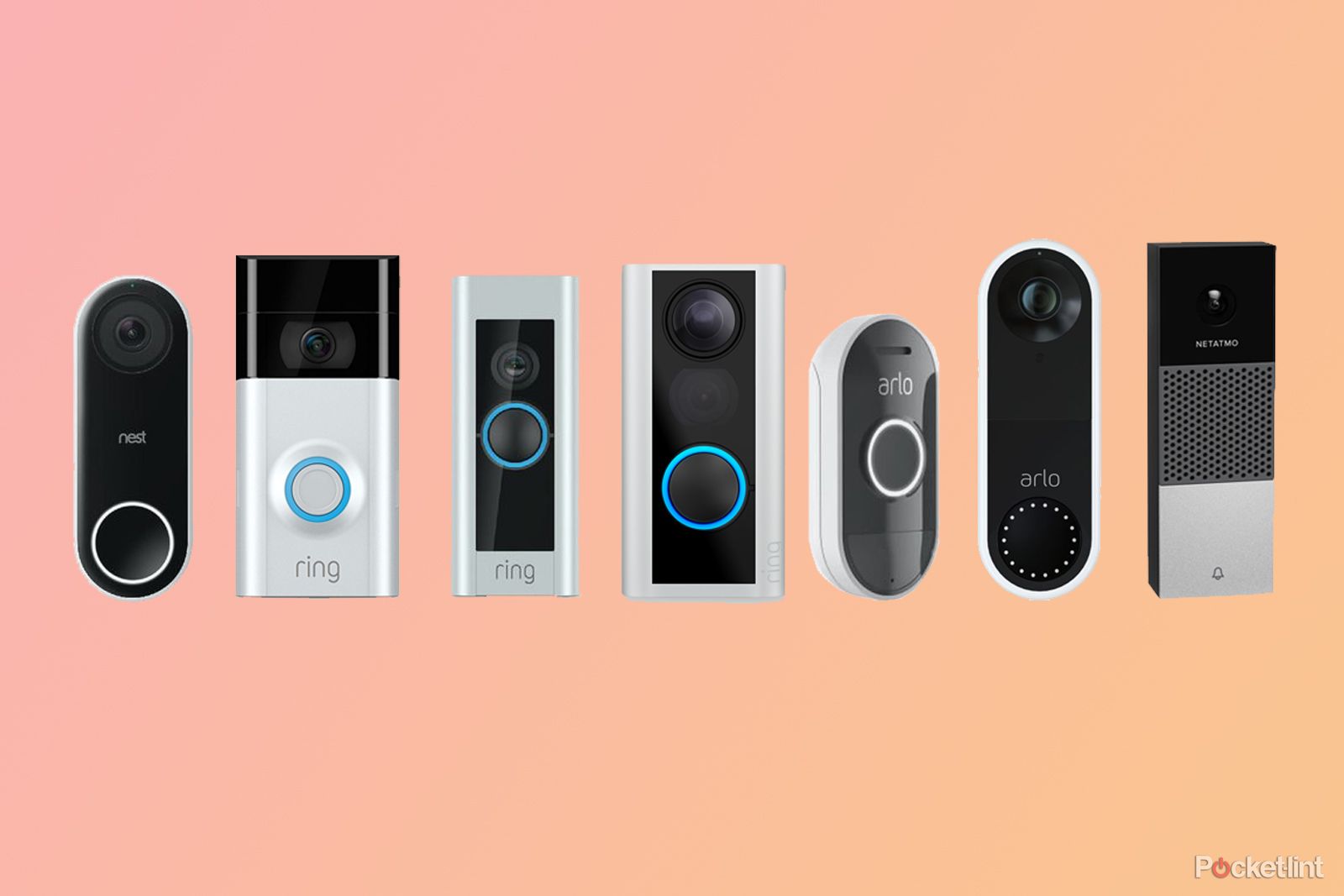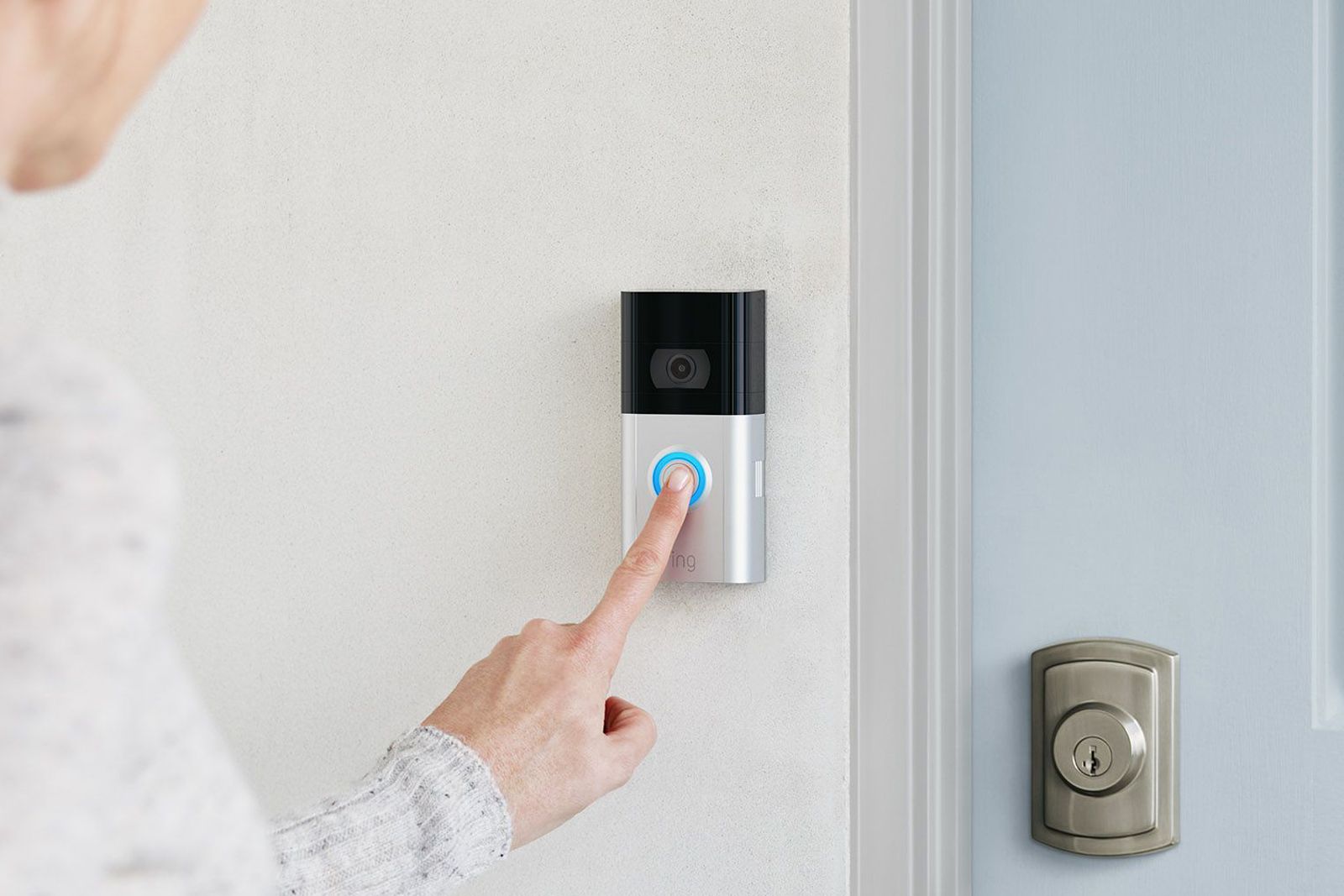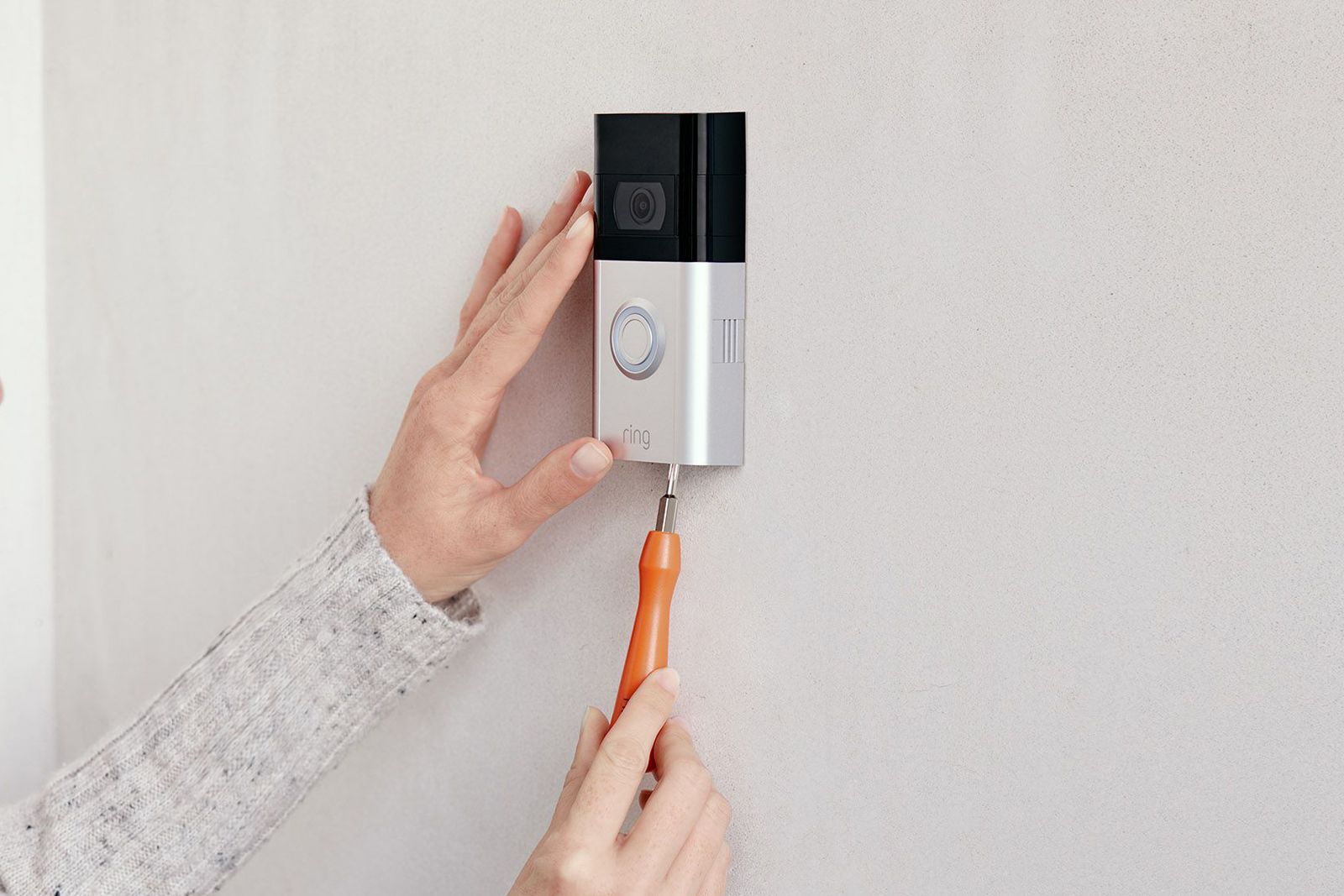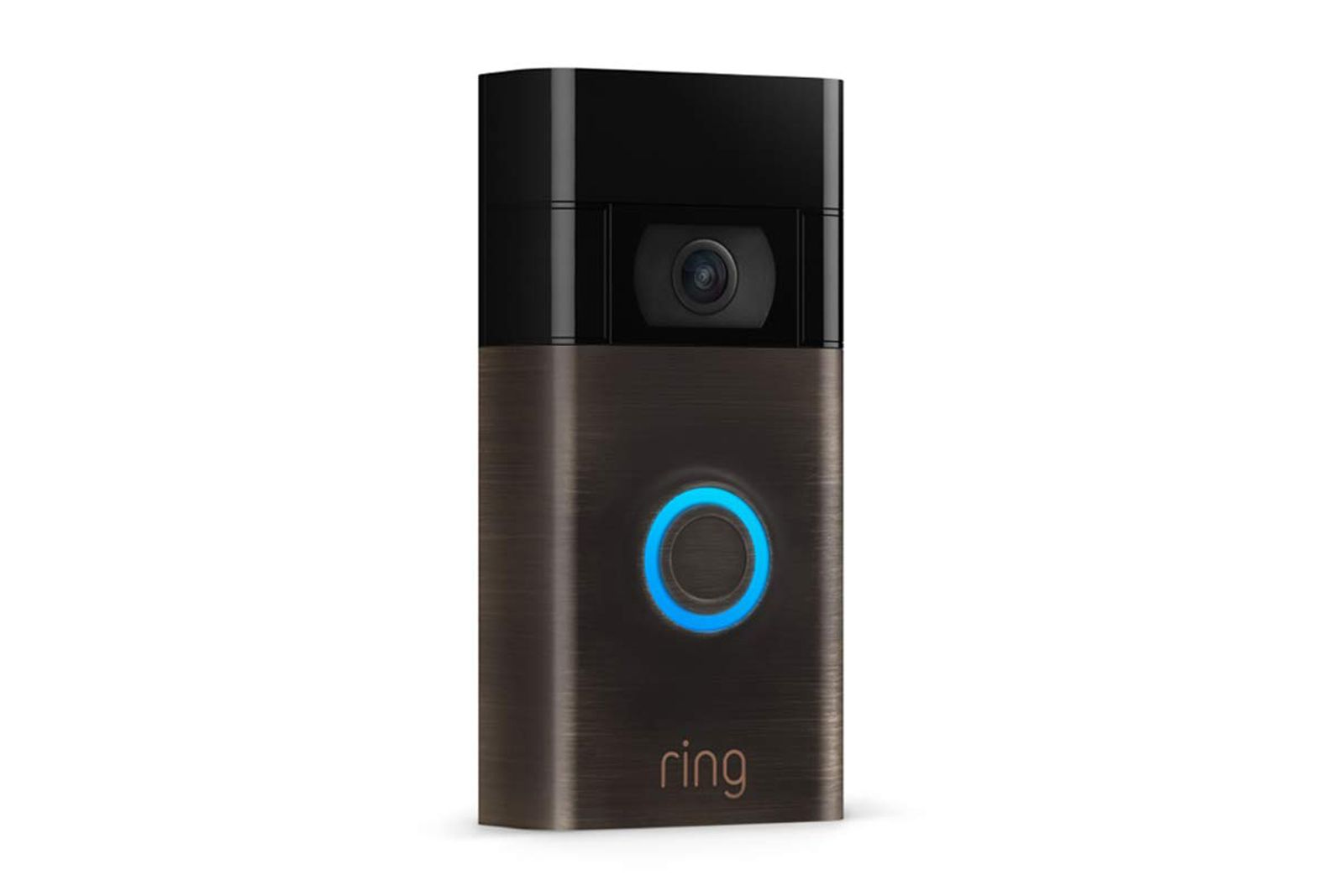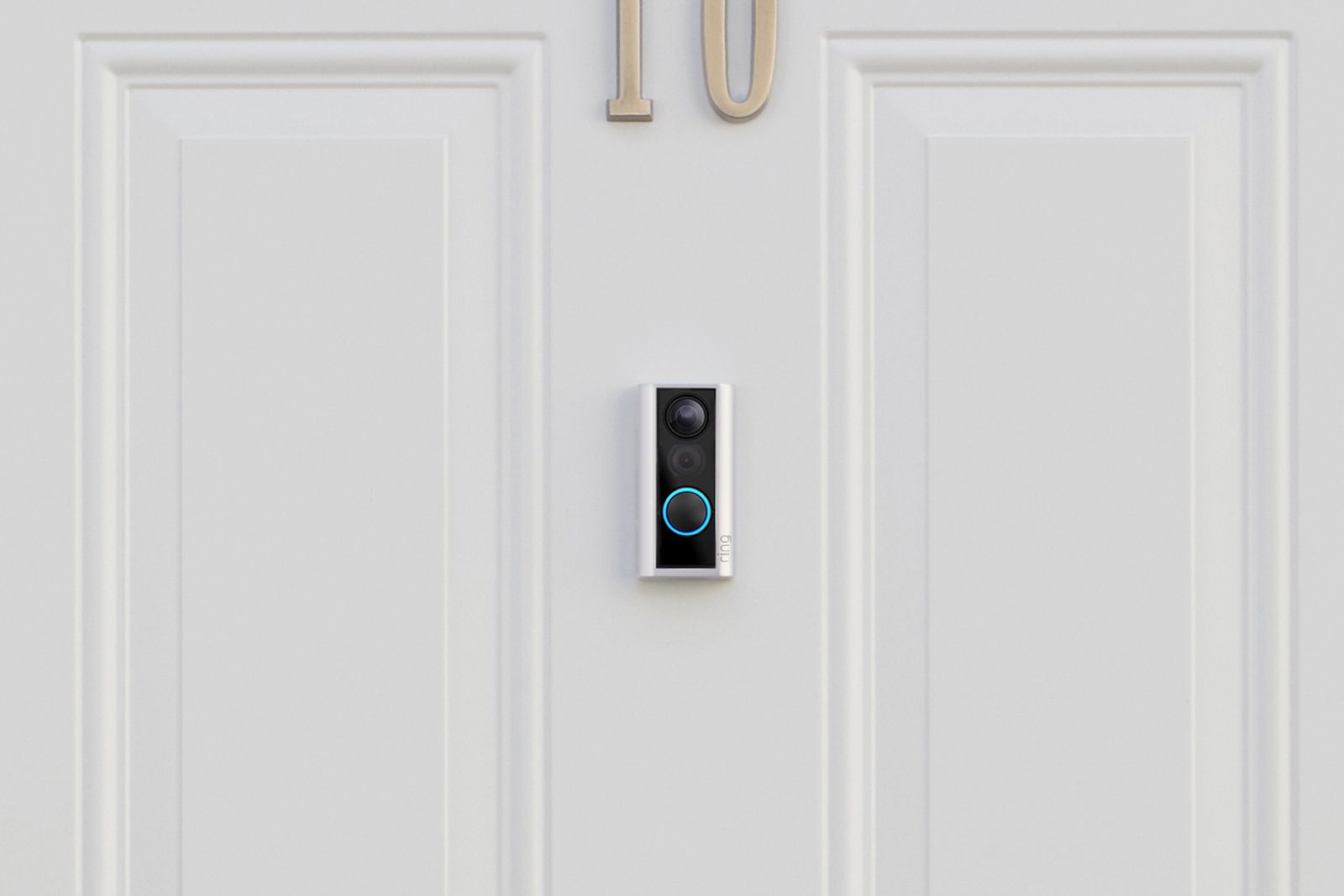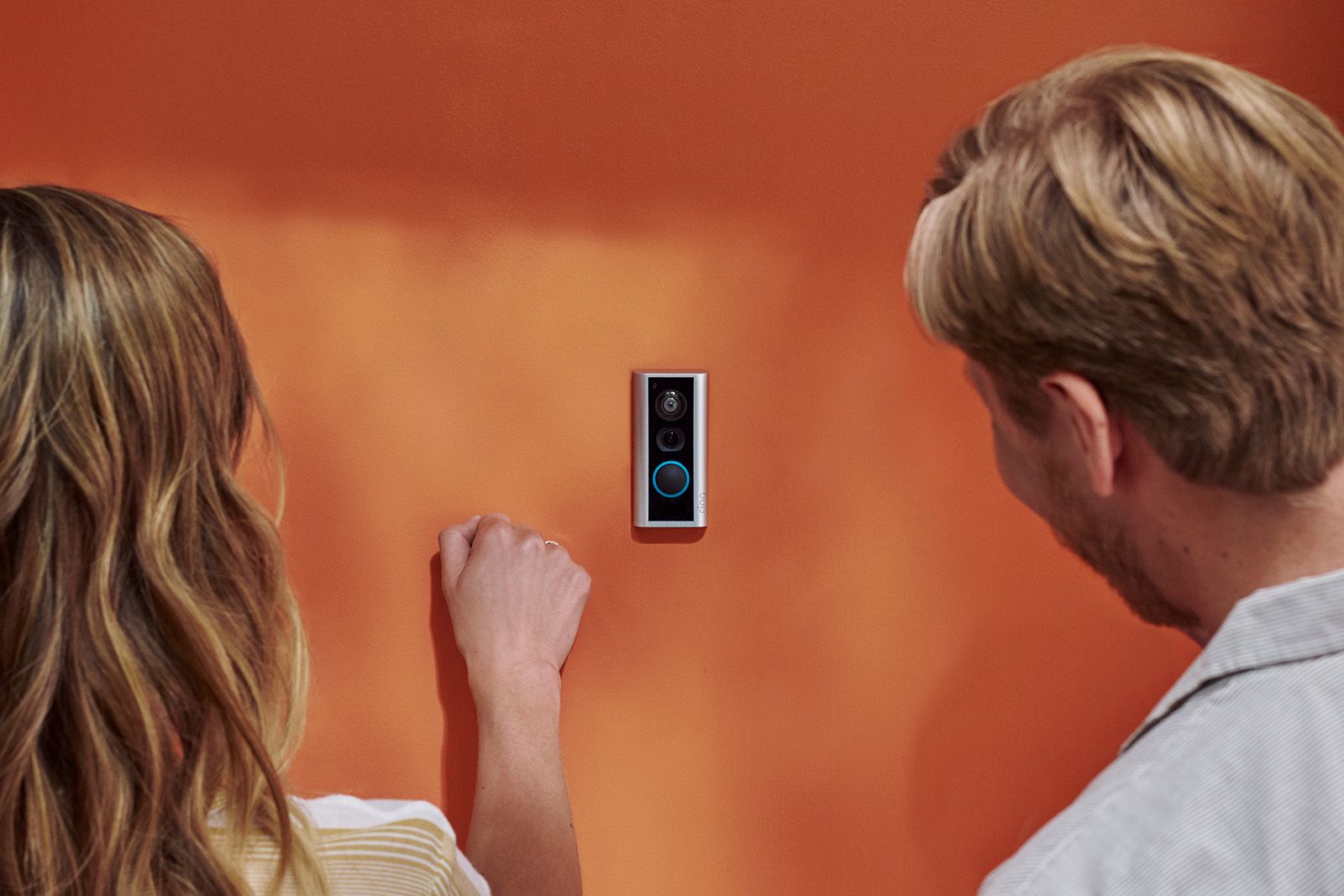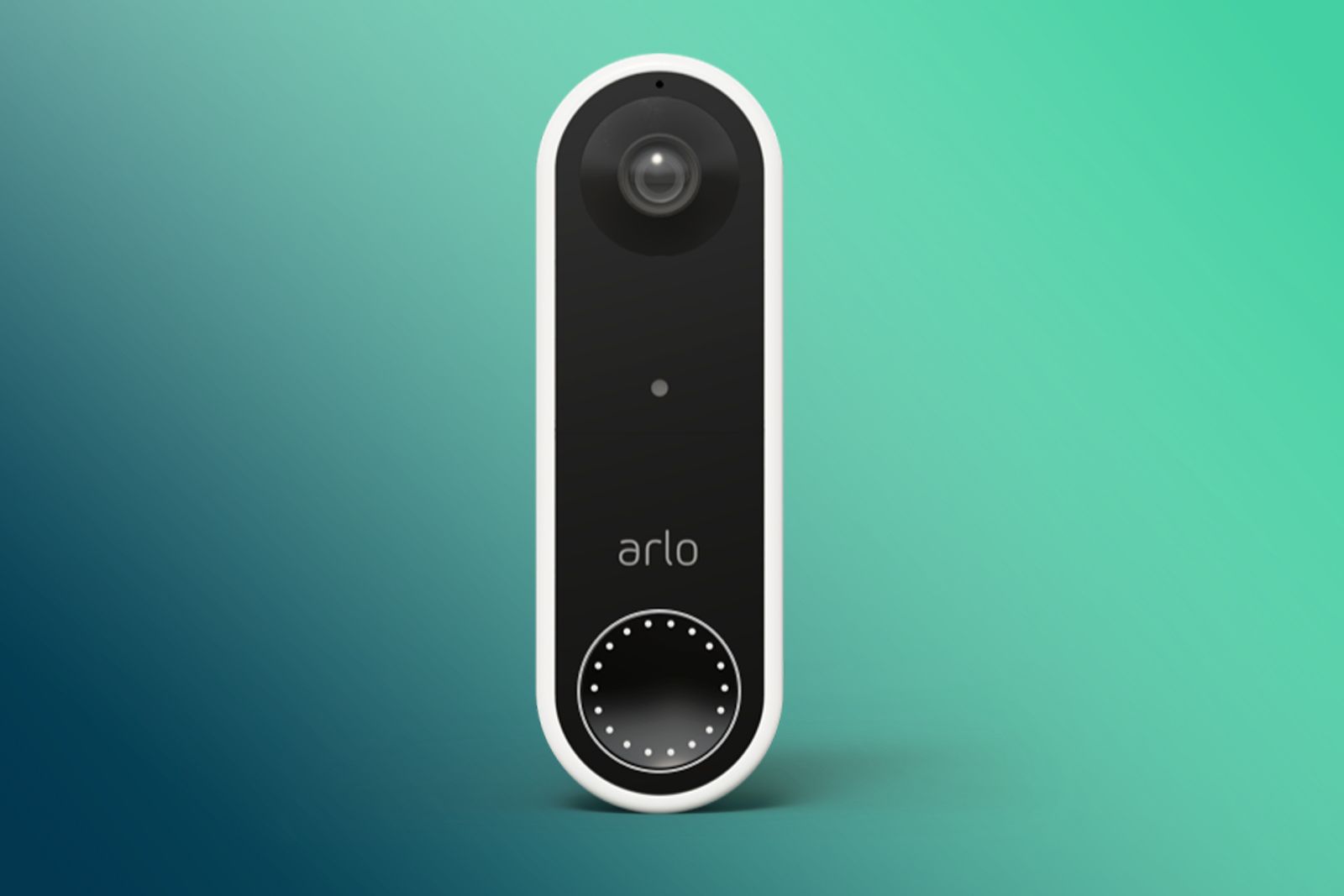There are several options available if you're in the market for a video doorbell, with Nest, Arlo and Netatmo all offering their own take on the smart doorbell and Ring providing five models alone.
The various options can be confusing, with some requiring hardwiring, while others can simply be stuck onto the front of your door.
This feature runs you through the differences between Ring's video doorbells, Nest Hello, Arlo's options and Netatmo's Smart Video Doorbell to help you figure out which video doorbell is the right one for you.
Wired video doorbells
Nest Hello
nest hello
- Features: Person detection, motion detection, sound detection, two-way talk and listen with noise and echo cancellation, quiet time, scheduling, Quick Responses, Google Assistant compatible, facial recognition, activity zones
- Camera specs: 160-degree FOV, 4:3 aspect ratio, night vision, HDR imaging, 1600 x 1200 video, 60fps
- Requirements: Wired
- Subscription: £5/month or £50/year for 30 days recorded video, facial recognition and activity zones
Nest Hello is a slim, sleek video doorbell. It's smaller than the Ring doorbells at 117 x 43 x 26mm and it's more premium looking. Its small size is a result of it requiring hardwiring however, which is no problem if you already have a wired doorbell, but more of a process if you don't.
A camera lens is at the top, a button with an LED ring is positioned at the bottom, and there is a microphone and a speaker, allowing you to have a conversation with the person at your door using the Nest app. There are Quick Responses in the app, enabling you to play a pre-recorded message to visitors, while a Quiet Time feature offers the ability to turn off the indoor chime for a set period of time.
Hello's HD camera shows a head-to-toe image of the person at your door, as well as a group of around five people and it has night vision and HDR imaging. Hello also offers both person detection and facial recognition, as well as activity zones, though the latter two require a Nest Aware subscription.
Nest Hello is compatible with Google Assistant speakers. You can get visitor announcements in the Nest app and any Google Assistant-enabled speakers you have in your home will announce when someone is at the door. If you have a Nest Aware subscription and you've saved their face, it will announce who it is. For those with Nest Hub or the Nest Hub Max, both devices will automatically stream the Nest Hello's view when the doorbell rings.
Ring Video Doorbell Pro
Ring Video Doorbell Pro
- Features: Two-way talk and listen with noise cancellation, advanced adjustable motion detection, Alexa compatible, interchangeable face plates
- Camera specs: 160-degree FOV, infrared night vision, 1080p
- Requirements: Wired
- Subscription: £2.50/month or £25/year for up to 30-days recorded video
The Ring Video Doorbell Pro is the closest to the Nest Hello, offering a slim build and a rectangular shape but with straighter edges than the Nest option.
It measures 114.3 x 46.7 x 20.3mm, so it's pretty close in size to the Hello and smaller than the wire-free Video Doorbell 3, though this is again down to it being hardwired. There is no battery option for this Ring model, meaning unless you have a wired doorbell already, the installation process is trickier than the other Ring models.
The Pro offers many of the same features as the Ring Video Doorbell 3 but it improves on some of them, including motion detection. The Ring Video Doorbell Pro has advanced motion detection, offering customisable motion zones - that you can draw on screen in the app - as well as human detection. There is no facial recognition though - you'll need the Nest Hello doorbell for that.
The Pro has two-way talk with noise cancellation and it is also compatible with Alexa so you can ask the Echo Show to present your front door. It also has a 160-degree FOV and night vision so you'll get the same picture quality as the Video Doorbell 3.
Arlo Video Doorbell
Arlo Video Doorbell
- Features: Motion detection, two-way talk and listen, Quick Responses, Siren, Direct-to-mobile video calling, 1:1 aspect ratio, Google Assistant, Alexa compatible
- Camera specs: 180-degree FOV diagonal, 1:1 aspect ratio, night vision, HDR, 1536 x 1536 video
- Requirements: Wired
- Subscription: Three-months free Arlo Smart, then from £2.49 a month for 30 days cloud storage
The Arlo Video Doorbell is slim and sleek, like the Nest Hello and Ring Video Doorbell Pro, as a result of it being another wired option so fine for those with a wired doorbell, but a little more hassle for those without.
There is a camera at the top and a button at the bottom and the Arlo Video Doorbell features a siren, that can sound automatically during an event, or be triggered remotely to deter intruders. As with the Nest Hello, the Arlo Video Doorbell has a number or pre-written responses that can be sent from the app if you aren't home to answer the door, and there is two-way audio on board too.
Where the Arlo Video Doorbell differs from others on this list is it's viewing angle. Rather than a traditional 16:9 aspect ratio, the Arlo Video Doorbell has a 180-degree field of view with a square aspect ratio, designed to allow you to see a person from head to toe, as well as any packages on the doorstep, for example.
The Arlo Video Doorbell will also video call your phone when someone has pushed the button, reducing the response delay found with some video doorbells when the notification has to go through the app. There's no facial recognition like the Nest Hello, but the Arlo Video Doorbell has night vision, motion alerts and HDR video. It is also compatible with Google Assistant and Amazon Alexa.
There's no longer a free tier on the subsciptions - if you want cloud storage after the initial trial finishes, you'll need an Arlo Smart plan.
Netatmo Smart Video Doorbell
Netatmo Smart Video Doorbell
- Features: Alerts for attempted theft of doorbell, weatherproof, Apple HomeKit compatible, person detection, video call on smartphone when doorbell rings
- Camera specs: HDR, infrared night vision, 1080p
- Requirements: Wired
- Subscription: MicroSD storage, no subscription required
Netatmo revealed its Smart Video Doorbell at CES 2019 but it's not yet available to buy. It has a compact and elegant design - rectangular in shape and a little larger than the Nest Hello.
The Netatmo Smart Video Doorbell is compatible with Apple's HomeKit so you can ask Siri to show you your front door on your iOS device and it offers person detection too. Despite Netatmo's Welcome camera offering facial recognition however, the Smart Video Doorbell doesn't have this on its list of features.
It will alert you if someone tries to tamper with it though and it will video call you on your smartphone when someone rings the doorbell, like the Arlo Video Doorbell. The Netatmo Smart Video Doorbell is wired so it will need to replace an existing wired doorbell or will need professional installation.
Battery-powered video doorbells
Ring Video Doorbell 3 Plus
Ring Video Doorbell 3 Plus
- Features: Pre-roll video capture, two-way talk and listen with noise cancellation, adjustable motion detection, Alexa compatible, interchangeable face plates, quick-release removable battery pack
- Camera specs: 160-degree FOV, night vision, 1080p
- Requirements: Battery or wired
- Subscription: £2.50/month or £25/year for up to 30-days recorded video
The Ring Video Doorbell 3 Plus is designed to be battery powered, for easy installation wherever you want to put it. In this latest version of the Ring, you get all the features you get elsewhere, but with the addition of pre-roll video.
Pre-roll video captures 4 seconds of video before the motion alert was triggered. That means you can look back a little further and see what happened before that person reached the door. The idea is to remove the potential for something to be missed because that person didn't make it to the door, for example.
Otherwise, the feature set is the same as the Ring Video Doorbell 3. That includes the option for two-way conversations, adjustable motion detection zones, interchangable face plates and the option to run it from battery, or hook it up to existing wiring. Installation is really easy for battery-powered operation, with everything you need in the box.
Where the Video Doorbell 3 Plus (and 3) differ from the Video Doorbell 2, is that they offer 5GHz Wi-Fi in addition to 2.4GHz Wi-Fi, but otherwise the quality of the video is the same at 1080p, with a 160-degree lens. Again, you get more options for storage with a Ring Protect Plan.
Ring Video Doorbell 3
Ring Video Doorbell 3
- Features: Two-way talk and listen with noise cancellation, adjustable motion detection, Alexa compatible, interchangeable face plates, quick-release removable battery pack
- Camera specs: 160-degree FOV, night vision, 1080p
- Requirements: Battery or wired
- Subscription: £2.50/month or £25/year for up to 30-days recorded video
The Ring Video Doorbell 3 replaces the Video Doorbell 2. As we said above, it's basically the same device, but it offers additional Wi-Fi connectivity so will likely give you a more reliable connection, as well as offering improved motion detection. The 3 doesn't get the pre-roll function of the 3 Plus, however.
Elsewhere, the features, functions, design and installation are all the same as the Video Doorbell 3 Plus or the Video Doorbell 2. As we said, this is essentially a replacement for the older device and while it will offer some slight changes, it is likely to be more expensive than the older model as a result.
Ring Video Doorbell 2
Ring Video Doorbell 2
- Features: Two-way talk and listen with noise cancellation, adjustable motion detection, Alexa compatible, interchangeable face plates, quick-release removable battery pack
- Camera specs: 160-degree FOV, night vision, 1080p
- Requirements: Battery or wired
- Subscription: £2.50/month or £25/year for up to 30-days recorded video
The Ring Video Doorbell 2 is the successor to Ring's original Video Doorbell but has now been replaced by the Ring Video Doorbell 3. That might mean that you can find this model for cheaper than some other options, but the Wi-Fi might not be as good and the motion detection isn't as good.
It does, however, offer the same quality of video capture and pretty much the same set of feautres, working through the app and offering you longer online storage of video with a Ring Protect subscription.
Ring Video Doorbell
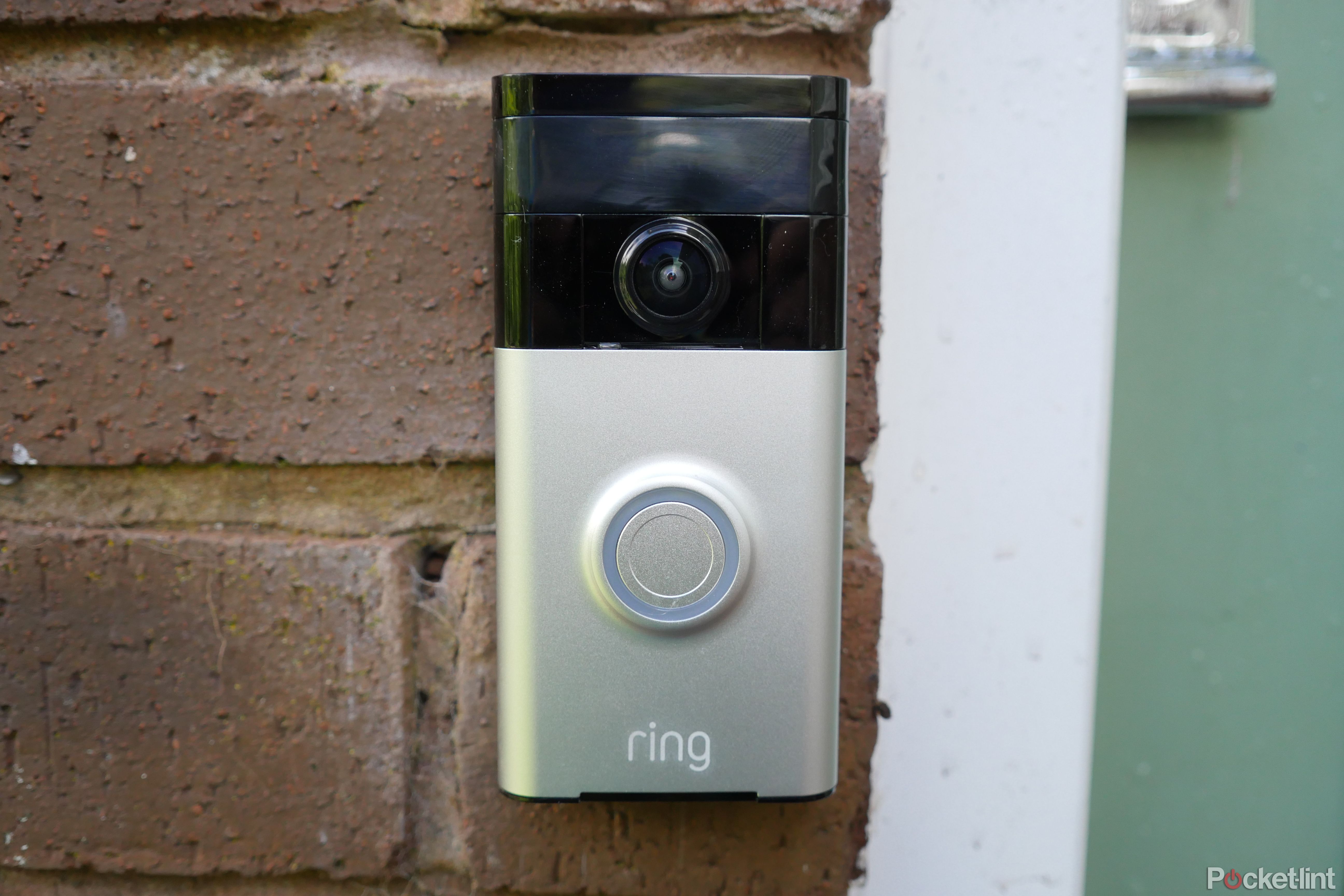
Ring Video Doorbell (2nd Gen)
The Ring Video Doorbell (2nd Gen) isn't quite as slick as the doorbells above it, but it is much cheaper. It still offers 1080p Full HD video capture too, though it doesn't feature a removable battery. This means you'll have to dismount the unit in order to charge it up, which isn't as convenient as removable ones.
- Features: Two-way talk and listen with noise cancellation, adjustable motion detection, Alexa compatible, interchangeable face plates, built-in battery pack
- Camera specs: 155-degree FOV, night vision, 1080p
- Requirements: Battery or wired
- Subscription: £2.50/month or £25/year for up to 30-days recorded video
Ring has released a new version of its entry-level device, but has given it a technical upgrade. The Ring Video Doorbell supports 1080p video, so that's the same resolution as other devices in the range and it also supports the same range of smart functions, along with the need for a subsciption if you want to access that captured video in the cloud.
Again, you get everything you need in the box and it connects wirelessly to your home network (2.4GHz only) and is battery powered. The big difference here is that the battery is part of the main unit, so rather than just removing the cover and swapping the battery, you'll have to take it off and recharge, so you might be without a doorbell while that is happening. It's more affordable as a result, however.
Ring Door View Cam
- Features: Two-way talk and listen with noise cancellation, impact sensor, glass viewer, privacy zones, smart alerts, Alexa compatibility
- Camera specs: Infrared night vision, 1080p
- Requirements: Battery powered
- Subscription: £2.50/month or £25/year for up to 30-days recorded video
The Ring Door View Cam adds a viewfinder, with the idea being that you replace your existing door viewer with the Door View Cam turning it into a security device. It's really designed for those living in appartments or those who are renting.
The Door View Cam comes with many of the same features as other Ring video doorbells, including two-way talk and listen with noise cancellation, HD video and motion detection, but it adds a few extras too. An Impact Sensor will alert you if someone knocks on your door rather than pushes the doorbell for example, and Privacy Zones allow you to turn off audio recording, as well as block out certain zones in front of your doorbell.
Arlo Essential Wire-Free Video Doorbell
Arlo Essential Video Doorbell Wire-Free
- Features: Motion detection, two-way talk and listen, Quick Responses, Siren, Direct-to-mobile video calling, 1:1 aspect ratio, Google Assistant, Alexa compatible
- Camera specs: 180-degree FOV diagonal, 1:1 aspect ratio, night vision, HDR, 1536 x 1536 video
- Requirements: Battery
- Subscription: Three-months free Arlo Smart, then from £2.49 a month for 30 days cloud storage
The newest addition to Arlo's selection is the the Essential Wire-Free Video Doorbell. It offers similar functionality to the wired version of this bell - except that you'll need batteries to power it.
That will make installation easier, while still giving you at 1:1 view and access to Arlo's AI features via a Smart subscription.
A note about price, availability and subscriptions...
Just buying a doorbell isn't quite the end of the story. Arlo, Ring and Nest all offer subscription packages that you'll want to consider, while Netatmo (when it finally launched) stores video locally meaning there are no extra charges with that device.
Ring offers video functions for the retail price, but you'll need the Ring Protect subscription if you want to see recorded video or download video. At a basic level (£25/$30 a year or £2.50/$3 a month) it will save video from one camera for 30 days so you can review it after the fact (otherwise, if you don't answer, you don't see the video). The Protect Plus option covers you for unlimited cameras, but costs £80/$100 a year (£8/$10 monthly).
Nest offers video functions for its retail price too, but as with Ring, you'll need a Nest Aware subscription to download videos, as well as access features like familiar face detection and activity zones. Otherwise you only get 3 hours of video you can look back at.
Nest Aware starts at £4/month or £40/year for storing 5 days of video. For £8/month or £80/year, you'll get 10 days of video history and £24/month or £240/year will give you 30 days. The cost will add up if you have more Nest cameras too so be mindful of that.
Arlo has now scrapped its free cloud offering, so after the initial 3-month trial, you'll have to have an Arlo Smart subscription or you'll lose access to any sort of cloud storage. You'll still be able to live view and answer calls, but there will be no record of what happened if you're not paying. Arlo Smart costs from £2.49/$2.99 a month.
Conclusion
The Nest Hello has the strongest feature set of the smart doorbells being compared here, with facial recognition and visitor announcements both excellent elements. It also has a good aspect ratio for a wider shot, great video quality, HDR, and it offers extra features too, like quiet mode and scheduling.
Hello also has the most expensive subscription package though and it requires hardwiring, which makes it an expensive option, especially with professional installation. Still, for those with Google Home devices, it's the option we'd recommend.
Ring's Video Doorbell 3 is a cheaper alternative to Hello and though it lacks some of Nest's features, it has the benefit of interchangeable plates, as well as running on batteries so installation is significantly easier. The Ring subscription options are also cheaper and it is Alexa compatible so for those with an Amazon Echo Show, it's certainly the obvious choice. It's likely to be the most popular device for those wanting a battery-powered video doorbell.
The Arlo Video Doorbell offers some great features including compatibility with Amazon Alexa, Google Home. It also has a 1:1 aspect ratio field of view, direct to mobile video calls and a nice design. The wire-free version is so new, it's not widely available to buy yet.
The Netatmo Smart Video Doorbell also goes back to hardwiring, meaning installation may not be that simple but if you're an Apple HomeKit fan, it's one of the only video doorbells compatible. It has some good features like person detection, a simple design and it stores videos locally so no need for any subscriptions. Only downside, you have to wait for it to be available.

